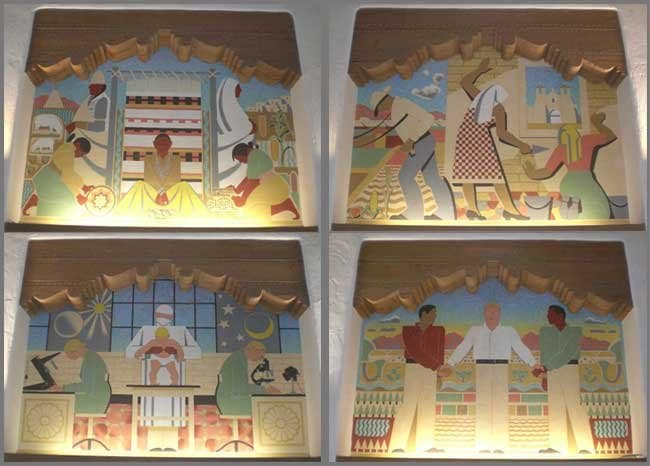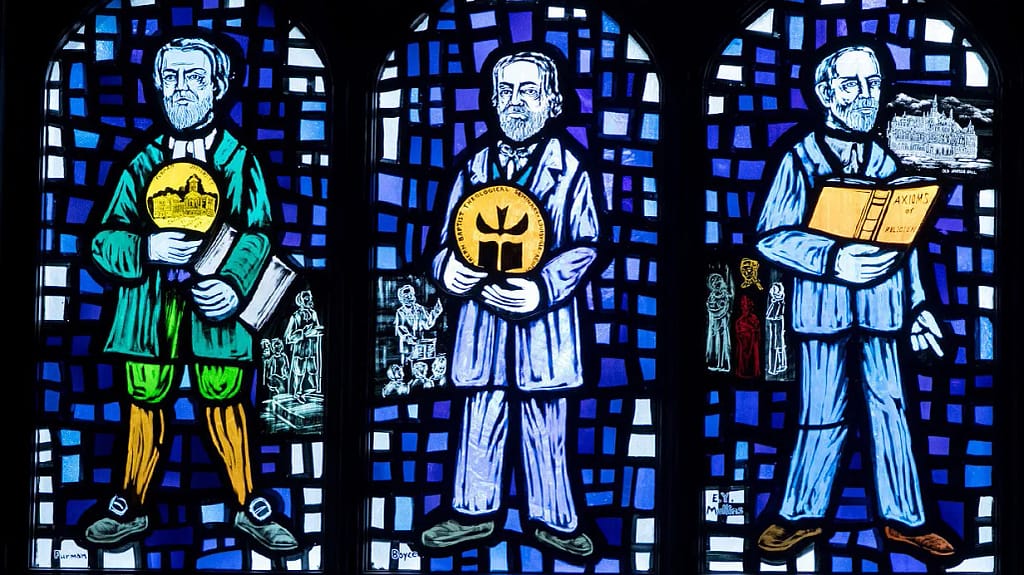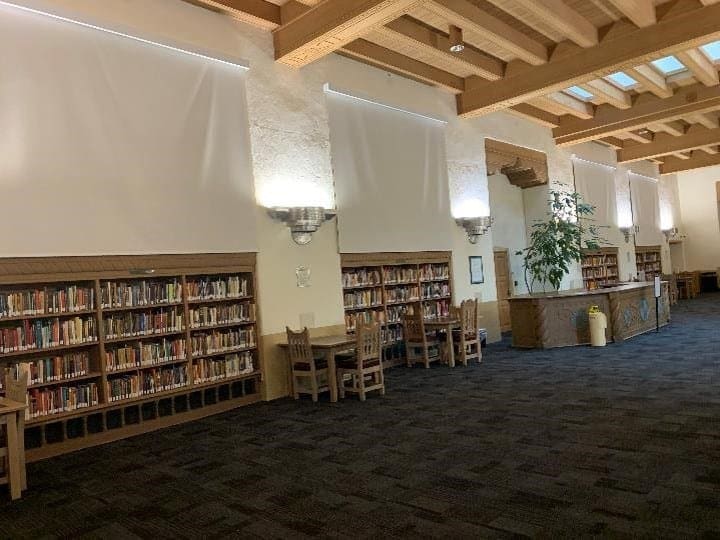These stained-glass windows are located in St George’s Anglican Church, Malvern, Melbourne, Australia, and celebrate Bishop Reginald Heber (1783-1826) and Bishop William Grant Broughton (1788-1853). The problems are obvious: The two are pictured in full clerical robes and tower over the indigenous peoples who are small, naked, supplicant, and with penitent gazes. The story these tell is clear, and the ongoing presence of such images in spaces of Christian worship sets into sharp relief claims for reconciliation in settler cultures like Australia.
Update
Mike Karim and Jason Goroncy have pointed me to two other problematic examples, but ones which include approaches for redress.
The first, from Mike Karim, concerns the “Three Peoples” murals, painted by Kenneth Adams, and commissioned in 1939 by James F. Zimmerman, the then president of the University of New Mexico, and which are housed in the Zimmerman Library.

These four images–named “Indians,” “Mexicans,” “Anglos,” and “Assimilation”–have been the subject of extensive critique. Apart from the cultural stereotypes, the whole Arian motif placed within a 1939 mural should be something to ponder. And yet, it was not until the 2010s that a committee was formed and only in 2018 were the final recommendations made regarding what to do with the images. The key problem, which is all too common, as stated on the website, is that “Zimmerman Library is on the National Register of Historic Places (as per US Dept of Interior, National Park Service). This requires State Historical Preservation Office approval before we can make changes to permanent aspects of the building.” This caution includes both the avoidance of any “adverse effect” and access for a conservator to protect these images.
The first step was to install a “temporary shade” to cover the mural.
The long term solution is not clear from the website, but Mike Karim suggests that “the initial discussion was to apply a smart glass over each mural so as to present/project Native art, while preserving the integrity of the murals.” Depending on how the two images might be interrelated (if that is an option), it might represent a constructive retelling/overlaying of the history and the future.
The second example comes from Highland Baptist Church in Louisville, Kentucky. This stained glass features three people: two enslavers, James Boyce and Richard Furman, and one radical segregationist, E.Y. Mullins.

It would appear, according to “Reparations in a Local Church,” that “no final decisions about the windows have been made,”but “Highland now commits 1% of its budget specifically toward reparations and raises funds to further contribute to this initiative.” This, of course, is not much at all, and in like manner to the context of Australia, the land of on which the church situated would be stolen by those represented in the stained glass windows. Nor does it address questions of power (it remains a question of money and not relationship). But…it is more than most places are even attempting.
Note that the images stem from the 1970s. Such timing, in reaction to the civil rights movement and in some endeavour to curate a form of identity during a period of secularisation, is common. Note further that such discussions have begun to occur in the 2020s, which is really late, but a beginning is a beginning.

So what do you suggest be done with such windows?
Personally, I think that they should be removed and replaced, and that the churches create a museum of colonial legacies, with attached theological reflections on complicit behaviours and the ongoing violence accompanying such imaginary
Good idea/s.
Comments are closed.